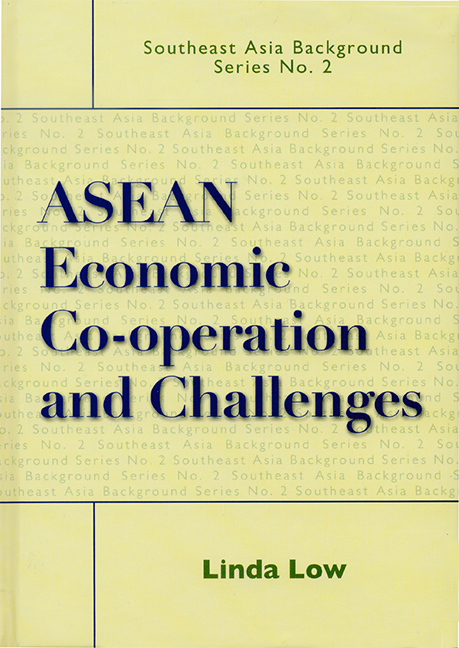1 - Background
Published online by Cambridge University Press: 21 October 2015
Summary
INTRODUCTION
Since its formation in 1967, the Association of Southeast Asian Nations (ASEAN) has changed from security and political concerns to the more economic. It started with a preferential trade arrangement (PTA) in 1977, graduating to a free trade area aimed for completion by 2002 which did not quite happen. Currently the concept has been modified somewhat to an ASEAN Economic Community with a single market in mind. ASEAN enlarged once in 1984 with Brunei joining Indonesia, Malaysia, the Philippines, Singapore and Thailand as ASEAN-6. It has faced greater and more profound widening and deepening issues since it took in Vietnam, Cambodia, Laos and Myanmar in the new millennium with ASEAN-10, i.e., a total of ten countries are now members of ASEAN. If ASEAN continues to muddle through at its own pace and time as it has for almost four decades, it may be marginalized. This is because a new regionalism has occurred including ASEAN Plus Three with China, Japan and Korea since the Asian crisis.
Paradoxically, the geographical value of Southeast Asia has gained ascendancy as Japan, China, the United States and India have individually approached ASEAN for some free trade arrangements (FTAs). The challenge and dilemma for ASEAN is to get itself in shape to take advantage these offers. It has to take the evolving new regionalism in its stride. Drifting along as it continues to muddle through the changing geo-economics and geo-politics, is not an alternative. The most crucial ingredient, that is ASEAN leadership, seems to be missing. Individual ASEAN states are in various stages of their own political and economic transition. The “ASEAN Way” lacks deep political commitment to push for economic integration, unlike the experience in the European Union. The prospects of ASEAN remain ambiguous and ambivalent. Perversely, it may take another crisis or external threat for the ASEAN resolve to be glued together again.
GENESIS, ORIGINS, AND DEVELOPMENT
The brief existence of the Association of Southeast Asia (ASA) started in 1959 was to deal with territorial and political disputes.
- Type
- Chapter
- Information
- ASEAN Economic Co-operation and Challenges , pp. 1 - 12Publisher: ISEAS–Yusof Ishak InstitutePrint publication year: 2004



